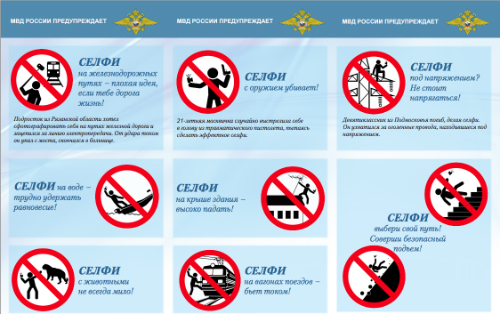- The primary cause of death during self-photography was falling.
- Wikipedia reports nearly 60 self-photography-related deaths since 2014.
- Physicians can remind patients how profoundly distracting and dangerous smartphones can be.
- Remind patients to first take full view of their surroundings, then stop and pay full attention to the phone, and then put it away; They are much safer doing just one thing at a time.
According to a list compiled by Wikipedia, there have been between 50 and 60 deaths worldwide among people were attempting to take self photograph. The circumstances vary widely but the deaths almost always occur when the victim is attempting a dangerous behavior while taking the photograph. India has recorded more self-photography related deaths than any other country.
Most recently, according to CNN.com, a young teenager in India shot himself in the head with a .32-caliber handgun while attempting to photograph himself. Wikipedia lists about 50 deaths and a number of serious injuries suffered by people attempting self-photography. Here are examples from the Wikipedia article. (A complete list with references is available at Wikipedia.com.):
- In 2014, a 21-year-old Spanish man died from electrocution after climbing on top of a train to take a selfie with friends and touching a live high-voltage wire. that (contrary to the assumptions of the group) turned out to be live. One of the friends was taken to hospital and as of 18 March, 2014, remained "in serious condition."
- In April 2014, a 17-year-old Russian amateur photographer climbed atop a railway bridge in Saint Petersburg to take a selfie. She lost her balance and fell to her death.
- Four people were killed taking selfies in May, 2014: Puerto Rican musician Jadiel El Tsunami died in an accident shortly after taking a selfie while riding his motor cycle.
- In the United States, the pilot of a Cessna 150K and his passenger were killed when the pilot was distracted taking selfies and lost control of the plane.
- In Kerala, India, a 15-year-old boy was killed instantly by a speeding train while posing for a selfie on the track.
- In June of 2014, a 16-year-old girl died in Italy after plunging 60 feet while she was trying to take a photograph of herself on the seafront during a school trip to the seaside town of Taranto.
- In July of the same year, a 14-year-old high school student in the Philippines fell to her death after losing her balance while taking a selfie with a friend near a staircase landing of their school in suburban Pasig. According to doctors, she sustained a sharp blow to the head from the fall and broke a rib which pierced a kidney.
- In January of 2015, 4 people died taking selfies: First, a 21-year-old South African woman died after falling from Northcliff Hill, Johannesburg, as a male companion was setting up a tripod for a selfie.
- Two young men died in the Ural mountains as they pulled the pin from a hand grenade to take a selfie, which remained as evidence of the circumstances of their deaths.
- A two-month-old baby died in the U.S. after his mother accidentally shot him while trying to take a selfie in which she was pointing the gun at her baby.
- Three Indian students aged 20 to 22 died trying to take a "daredevil selfie" close to an oncoming train on railway tracks of Mathura, near Kosikala.
- May of 2015 was a particularly risky month for people conducting self-photography: An 18-year-old Romanian woman died when she attempted to take the "ultimate selfie", posing with a friend on top of a train in the north-eastern Romanian city of Iași. Tragically, she touched a live wire, sending an electrical current of as many as 27,000 volts through her body. A 17-year-old friend who accompanied her was hospitalized.
- A teenager climbed onto a railway bridge in the Ryazan region in Russia to take a selfie and died when he came in contact with live wires.
- A 21-year-old Russian woman asked a security guard at her office to give her a 9-millimeter rubber-bullet pistol for taking a selfie and accidentally shot herself in the head, sustaining heavy injuries.
- A 21-year-old man from Yogyakarta, Indonesia, fell into the crater of Mount Merapi and died while attempting to take a selfie.
- A Singaporean tourist died after falling into the sea while taking a selfie on a cliff in Nusa Lembongan, an island off the coast of Bali, Indonesia.
- The period of September through November of 2015 was also particularly deadly for self photography: A 19-year-old from Houston died after trying to take an Instagram selfie while holding a loaded gun to his head. He accidentally fired the gun and shot himself in the throat.
- A Japanese tourist fell down a staircase to his death while taking a selfie at the Taj Mahal, Agra, India.
- A 17-year-old Russian student fell to his death attempting to take a selfie while hanging from a nine-story building.
- An Indian engineering student died while taking selfies with friends at Kolli Hills, Namakkal, Tamil Nadu, India, when the rock on which he was standing cracked and gave way, plunging him 60 feet and causing his death from head injuries.
- A 14-year-old from Barcelona was hospitalized after suffering an electric shock while trying to take a selfie on the roof of a train car.
- Two engineering students of Wadhwan, Gujarat, India, drowned in Narmada Canal after slipping down the bank while taking selfies.
One person died and another was critically injured in the Kalyani area in Nadia district of India as they were run over by a train while they were taking selfies.The incident took place near the Kalyani Silpanchal Railway station. Sourav Dey and Abhishek Roy were taking selfies on the track when they were hit by a train.
A 14-year-old, Sahil C. Eshwarkar, who was trying to take a selfie atop a stationary train wagon at Nahur station yard in Mumbai, India, was electrocuted and died a few hours later. He accidentally came in contact with a 25,000-volt overhead electrical wire and was electrocuted, suffering burns over 80% of his body.
- 2016 is on track to be the deadliest year for self photographers, according to the Wikipedia article. Eight people died in January and February alone but the trend has continued through May.
- In January, a 19-year-old student fell from the top of a 20-story apartment building in Manila, Philippines, while taking a selfie. According to her classmate, "she was not satisfied with the photos they had taken so she decided to climb up the parapet wall."
- Abhishek Gupta, age 20, fell to his death while taking a selfie from the top of the Reasi Fort at Jammu and Kashmir, India.
- A 20-year-old college girl drowned at Bandstand Promenade in Bandra, Mumbai. She is believed to have been swept away in the high tide. According to the girl's friends, they were taking selfies, standing on the rock, close to the Bandra Worli Sea Link. The girls were standing 50 meters away from the shore when the water suddenly rose. They did not notice water rising and remained on the rock taking selfies. One of the girls was pulled into the water due to high tide.
Self photograph appears to be much more lethal than shark attacks or lightning strikes. According to a Wikipedia article on shark attacks, the Florida Museum of Natural History compares these statistics with the much higher rate of deaths from other, less feared causes. For example, an average of more than 38 people die annually from lightning strikes in coastal states, while less than 1 person per year is killed by a shark.
Even considering only people who go to beaches, a person's chance of getting attacked by a shark in the United States is 1 in 11.5 million, and a person's chance of getting killed by a shark is less than 1 in 264.1 million. In the United States, the annual number of people who drown is 3,306, whereas the annual number of shark fatalities is 1. In New York alone people are bitten 10 times more each year by other people than worldwide by sharks.
Mashable.com compiled statistics on the number of deaths in 2015 that are attributable to shark attack versus self-photography. It turns out that selfies are more dangerous than sharks (Figure 1).

(This one is very like a staged fake.)
While the Wikipedia article keeps track of deaths related to selfies, the number of people injured during self photography is much higher but precise numbers are not available. While the psycho-social causes have not been elucidated the phenomenon of people engaging in risky behavior while taking selfies has been clearly demonstrated.
A Practical Matter
The shark/selfie comparison is a humorous one but it alludes to a serious but entirely tractable medical issue: smart-phone distraction induced accidents. These sorts of accidents appear to be a phenomenon among relatively young people. Most of the dead and injured are aged <30 years.
What can physicians do with this information? Like smoking, drug abuse, motorbiking without a helmet, or driving without a seat belt, among other risky behaviors physicians can counsel young patients about these risks.
Ask patients to guess which is more dangerous – sharks or cell phones – and you’re into a discussion about the safe use of smart phones. Patients, especially the elderly, should stand still or sit down while using the phone. Make it clear that it absolutely is not safe to be distracted by a smart phone while driving, cycling, skateboarding, rollerblading, roller skating, skiing, or piloting an aircraft, and the like.
Remind patients of the following suggestions, no matter how self-evident they may seem -- especially among younger male patients. Follow these rules when engaging in self-photography:
- Stop and think about your surroundings.
- Do not pose with a loaded gun.
- Do not pose with, or near dangerous animals unless a barrier protects you.
- Do not take selfies while engaged in otherwise risky behavior such as operating heavy machinery, performing acrobatic stunts on a bicycle, skateboard, roller blades, etc.
- Do not photograph yourself in dangerous situations, such as in front of an oncoming train, atop an electric train, on electrical pylons, or on narrow, highly trafficked bridges. Avoid the distraction of self-photography while you are rock climbing or hang gliding.
- If you are in a situation where you need to be alert and engaged, don't take a selfie.
According to an article in The Telegraph (UK), most of the people involved were between 18 and 22 years old, and the accidents ranged from a man being electrocuted while climbing on a train to a pilot crashing a light aircraft, killing himself and a passenger, and multiple instances of people dying while posing with guns.
Al Jazeera, The Telegraph, and The Guardian noted that selfie-related injuries have become enough of a public health concern in Russia that the Ministry of the Interior has created a website, published a safety guide, video, and begun a public education campaign (Figure 2).

After a woman was gored by a bison in Yellowstone Park while taking a photograph of herself with her back to the animal, the park released a warning.
India outpaces all countries in selfie-related deaths. Health advocates and members of the government would do well to publicly address the issue among the country's youth.
